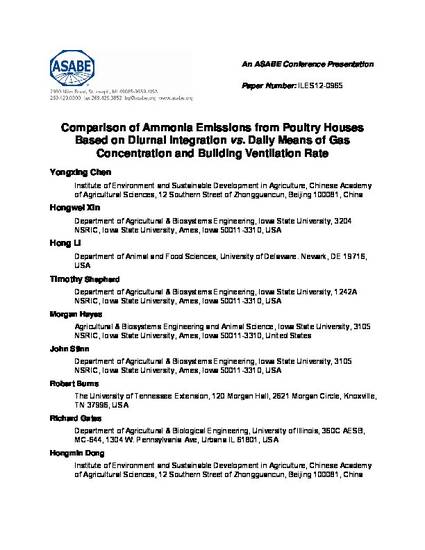
Quantification of aerial emissions from animal feeding operations (AFOs) requires the knowledge of both concentration of the constituent of interest and the ventilation rate (VR) through the emitting source. Daily emissions can be and are normally determined from diurnal integration of frequent measurements, referred to as the diurnal integration method (DIM), but is resource intensive. Alternatively, daily emission may be more economically estimated from daily means of concentration and VR, referred to as diurnal means method (DMM). In this study, DMM was compared with DIM in determining daily ammonia (NH3) emissions from mechanically ventilated laying-hen, turkey and broiler houses under U.S. production conditions. Results show that deviations in daily NH3 emissions between DMM and DIM methods ranged from as small as < 3% (e.g., for medium age turkey under both cold and warm weather conditions) to as high as 98% (e.g., broiler houses in summer). Deviations were related with coefficient of variation (CV) of VR or NH3 concentration, although prediction of the deviation using CV of VR and/or NH3 concentration alone will likely not produce reliable results. The study suggests that caution must be taken when using DMM to estimate daily NH3 emissions from poultry houses under typical US production conditions.
Available at: http://works.bepress.com/richard-gates/37/

This is an ASABE Conference Presentation, Paper No. ILES12-0965.